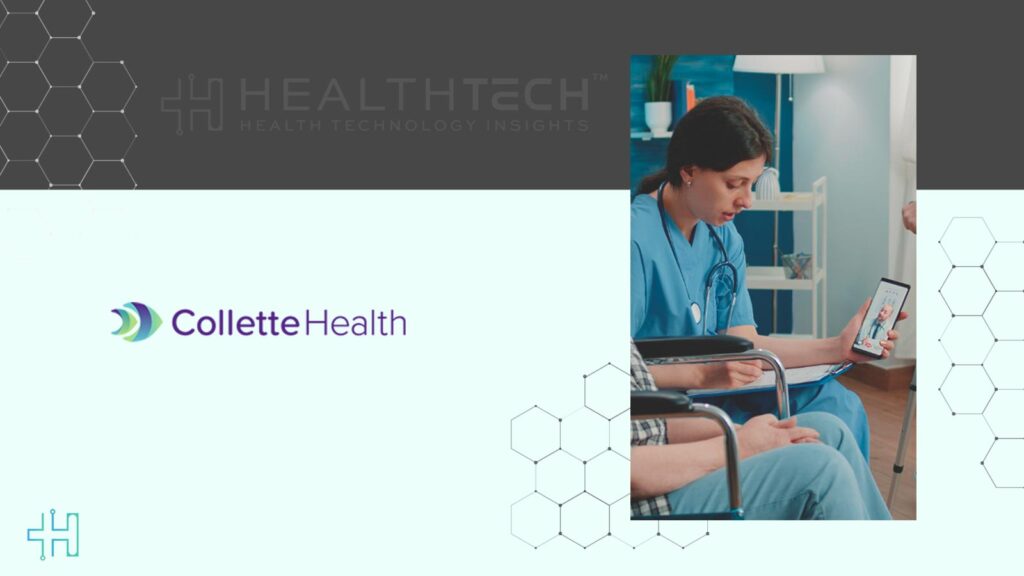The hospitals are no longer brick and mortar, offering facilities for the equipment and the doctors. They are in 2025 more digitally woven ecosystems purpose-built to deliver safer, faster, and more tailored care. It is being led by Smart Hospital Technology – a combination of new digital technologies, artificial intelligence, automation, and networked devices, which together make it more productive and patient-centric.
The call for smart hospitals is timely. Rising patient volumes, staffing gaps, and cost pressures force healthcare organizations to find new ways of doing more with fewer resources. Patients, however, expect a frictionless healthcare experience – less time waiting, accurate diagnosis, and unfettered access to their health data. Smart hospital solutions do this by connecting information across disparate systems, automating routine tasks, and enabling real-time clinical decision support.
But the value of smart hospital technology goes far beyond operational efficiency. From AI-assisted diagnostics that catch diseases earlier to wearable devices that provide continuous monitoring, these innovations place patients at the center of care. In this article, we’ll explore what smart hospital technology is, the features that define it, and how it is transforming patient care across the globe.
What Is Smart Hospital Technology?
Smart hospital technology is the use of interconnected digital networks, data-driven platforms, and intelligent automations for optimizing hospital operations and improving patient outcomes. Unlike traditional hospital IT, which operates largely in silos, smart hospitals build an integrated system where medical devices, electronic health records (EHRs), IoT sensors, and AI applications communicate with one another seamlessly.
Essentially, smart hospital technology is meant to improve clinical care, administrative effectiveness, and patient satisfaction. That is anything from automating clerical tasks like billing and scheduling, through to enabling AI-driven insights for early diagnosis, to creating patient-centric apps for instant access to medical information.
Examples of smart hospital technology are:
- Internet of Things (IoT) sensors monitor patient vital signs or monitor equipment usage.
- Artificial Intelligence (AI) to read medical images and predict patient decline.
- Robotics in surgery or logistics, like the dispensing of drugs.
- Automated systems in inventory optimization, patient flow, and bed management.
- Intelligent infrastructure in energy saving, digital security, and a safer hospital.
In simple words, hospital smart technology is all about getting the hospital smart, patient-oriented systems where all the devices and systems talk to each other to get the correct treatment at the right time.
Key Features of a Smart Hospital
A smart hospital is built on people, processes, and systems being connected in real-time. These are not merely a function of digitization; these are part of an intelligent environment where the flow of information is unhindered and the patient care is improved. The following are the key differentiators:
1. Integrated Systems and IoT
Smart hospitals also rely on Internet of Things (IoT) sensors to constantly watch over patients and equipment. Sensor networked, for example, tracks patients’ vital signs and alerts clinicians to aberrant changes, with asset tracking maintaining critical equipment like ventilators in inventory whenever required.
2. AI-Driven Analytics
Artificial Intelligence (AI) allows physicians to make faster and more accurate decisions. AI is able to analyze radiology images, predict patient decline, and even suggest tailored treatment regimens.
3. Robotics in Surgery and Logistics
Robotics is increasingly found in smart hospitals. Surgical robots enable minimally invasive procedures with enhanced accuracy, resulting in quicker recovery. Aside from surgery, robots also perform duties such as medication dispensing and supply transfer.
4. Remote Monitoring and Telemedicine
Smart hospitals look beyond the walls of bricks. Remote monitoring and telemedicine technology enable physicians to keep track of patients at home, preventing unnecessary readmissions.
5. Smart Infrastructure
Finally, the “smart” element extends to even hospital buildings. Smart lighting, smart cooling, and AI-driven security improve sustainability as well as patient safety. In 2024, Samsung Medical Center in South Korea implemented a smart logistics system, which resulted in an 87 percent reduction in inventory costs and energy consumption in storerooms.
How Smart Hospital Technology Improves Patient Care?
Effectively, smart hospital technology is not just about being efficient but is actually about delivering safer, faster, and more individualized care. By utilizing digital systems, hospitals are able to directly enhance patient experience in each stage of care, ranging from intake to recuperation.
1. Enhanced Patient Safety
Technologically advanced hospitals use automation and AI to minimize human error, a major source of preventable harm in the medical field. Automated drug dispensing systems ensure appropriate doses, while AI-based alarms notify physicians when a patient’s health begins to deteriorate.
2. Decreased Waiting Time and Quick Diagnosis
Long waiting lists remain a significant patient complaint. Intelligent technology like AI-powered triage systems and computerized scheduling systems maximizes hospital workflow.
3. Personalized Treatment Plans
Evidence-based care is typical of smart hospitals. AI systems help physicians generate customized treatment protocols through the examination of patient history, genetics, and lifestyle data. Such customized treatment not only improves the result but also reinforces patients’ trust in the health care system. For example, the collaboration between the Mayo Clinic and Google Cloud enabled real-time genomic analysis that enabled physicians to better personalize cancer treatments.
4. Increased Patient Engagement
Participation is key to recovery, and wise hospitals inform patients and empower them. Bedside tablets and mobile applications enable patients to see test results, track medications, or send notes to care teams. All this transparency creates confidence and satisfaction.
5. Seamless Post-Discharge Care
Intelligent hospital technology extends discharge through remote patient monitoring. Telehealth and wearables allow physicians to track recovery, thus making continued care a possibility. Remote monitoring of Mount Sinai Hospital heart failure patients lowered readmissions by 25% in 2024, demonstrating the long-term advantage of connected care.
Cost-Saving Benefits of Smart Hospitals
Even though smart hospital technology is more often associated with better patient outcomes, its economic advantages are also revolutionary. Rising health spending, manpower shortages, and ineffective operations have long beset hospitals. With smart systems, hospitals can bring down their expenditure on a sustainable scale without sacrificing quality.
1. Lowered Operational Costs
Smart hospitals automate routine work such as patient scheduling, patient admissions of patients, and supply chain management. This reduces the frequency of excessive manual handling and errors, leading to wastage of resources. For instance, computerized inventory monitoring prevents hospitals from buying more than they need, thereby avoiding overspending and stockouts.
2. Reduced Readmission Rates
Preventable readmissions are expensive. Intelligent hospital technology like home monitoring, artificial intelligence-driven early warning systems, and personalized care plans allows patients to heal at home, reducing the likelihood of readmission. Not only is it cost-saving, but it also enhances patient satisfaction.
3. Energy and Resource Efficiency
Networked infrastructure, including intelligent lighting, temperature control, and predictive failure of equipment, conserves energy and avoids expensive breakage. Hospitals, typically open 24/7, can reap huge efficiencies from these by minimizing utility bills and prolonging the lifetime of pricey medical gear.
4. Maximization of Usage of Workforce
Medical professionals spend huge percentages of their time on administrative tasks rather than patient care. Smart hospital systems free doctors and nurses of these burdens by automating scheduling, records, and communication. This would equal optimally staffed hospitals, reduced overtime, and prevented turnover for burnout – each of these equating to hard-dollar cost savings.
5. Streamlined Supply Chain and Asset Management
From medication to equipment, stock mismanagement means wasteful costs. Smart systems provide real-time transparency across usage, so supplies are allocated in the optimal manner across departments. They prevent over-ordering, and hospitals avoid losses due to expired or unutilized stock.
6. Long-Term Financial Sustainability
While the upfront cost of investing in smart technology is costly, the financial return in the long term is a thousand times greater than the investment. Hospitals save money in the long term through the efficiency created, avoiding penalty fees for suboptimal patient outcomes, and establishing their reputation, which results in more patients and collaborations.
Healthcare is only now starting to leverage digital technology
Smart hospital technology is creating a more efficient, safer, and patient-centered healthcare environment. From real-time monitoring to predictive analytics, these technologies allow hospitals to deliver better outcomes at lower operating costs. The shift to smart systems ensures that hospitals are equipped to ride out challenges like worker shortages and growing patient demands.
FAQs
1. What is smart hospital technology?
Smart hospital technology is the integration of digital technology, automation, and networked equipment to enhance patient care, improve efficiency, and maximize hospital operations.
2. What do smart hospitals do to improve patient care?
They use real-time tracking, artificial intelligence-driven analytics, and networked machines to provide customized care, reduce errors, and speed up response time.
3. What are some examples of smart hospital technology?
Examples include electronic health records (EHR) and remote patient monitoring to AI-powered diagnostic machines, scheduling software, and Internet of Things (IoT)-enabled medical devices.
4. Do smart hospitals save healthcare providers money?
Yes. Smart hospitals save healthcare providers money by reducing administrative costs, reducing readmissions, optimizing energy consumption, and better utilizing resources. These save them a great deal of money in the long run.
5. Are smart hospital systems secure?
Yes, but safely. Hospitals employ high-level encryption, multi-factor authentication, and security reviews on a routine basis to protect patient data.
Dive deeper into the future of healthcare.
Keep reading on Health Technology Insights.
To participate in our interviews, please write to our HealthTech Media Room at sudipto@intentamplify.com








